Nora Springs hopes to have new wastewater treatment facility built by late summer
By Kelly Terpstra, kterpstra@charlescitypress.com
As far as wastewater treatment plants are concerned, Nora Springs’ facility has already entered its golden years.
Built in 1959 and over 60 years old, the plant is ancient by almost any standard.
That’s one of the reasons Gridor Construction of Buffalo, Minnesota, is currently building a new activated sludge plant that will replace the old one for the town of just over 1,400 residents.
“Usually you get 40 years out of a plant, you’re doing good and that’s being conservative,” said Gridor Construction Superintendent Kris Sparby. “So they got their money out of this plant.”
Sparby said work is coming along fine on the $8.7 million project. Gridor Construction broke ground on the new site, which sits along the shoreline of the Shell Rock River, last March.
Nora Springs City Administrator Deb Gaul has been working with the Iowa Department of Natural Resources for some time now to help get the plant up and running. The DNR sent an executive order to have the new plant built by October of 2020 after several effluent violations occurred, dating as far back as 2010. Nora Springs was fined $6,000 in 2015 for breaking guidelines on ammonia emission limits set in its discharge permit.
“DNR said enough is enough, we’re having enough of these. They were telling council it needs to be done. It finally got to the point DNR decided they were going to issue an order,” said Gaul.
There was $2.5 million in improvements made to the plant in 1999 and 2000 because of massive flooding then.
“The plant took extensive damage. It’s such an old plant. It was not a cheap fix. It was just inundated with flood water,” said Gaul. “It kept hitting us hard, I mean big time.”
The ultraviolet disinfecting system was eventually replaced with a dechlorination network. The new plant will utilize UV lighting once again to break down waste solids.
A 2013 sanitary sewer lining project was also undertaken to help alleviate water that was getting into the sewer lines.
Gaul said the city has received $650,000 in two grants to help pay for the project. A $500,000 Community Development Block Grant grant comprised a large portion of that money.
A Wastewater and Drinking Water Financial Assistance Program was responsible for the remaining $150,000 in grant money. That grant money was awarded by the state last month to six communities in Iowa and was created through a portion of the tax generated on metered water.
The rest of the plant will be paid through $8.5 million in revenue bonds.
“Revenue bonds can only be paid for by the revenue that we receive in the sewer fund from the collection of our citizens,” said Gaul. “Basically the citizens will be making payments on this for the next 20 years.”
That has meant sewer rates have been raised considerably over the last five years. Gaul said a sewer debt fee of $20 is automatically processed into the sewer bills of home or property owners within the city limits of Nora Springs.
“There’s probably going to be another hit this year. We’ve taken substantial hits over the last five years and I’m saying substantial,” said Gaul
Crews are working on construction of the new facility, which will use UV disinfection to treat sewage before it is released into the river.
Sparby said aeration or the introduction of oxygen into equalization basins helps break down raw materials. That process involves microorganisms helping bio-degrade organic matter.
“Instead of just sitting on the bottom, it circulates the sludge for the bugs to break it down better,” said Sparby.
Sparby said it will take about one day, from the sewer coming in, to bypass into the old plant and hook up the new plant. He is hoping that can be done in April.
Eighty percent of the old plant will be bulldozed, leaving one equalization basin, a storage tank and one other building on the property.
Sparby said the plant could be operational by September.
The work on the project hit a snag early on when it was determined through borings into the ground that the soil wasn’t stable enough in areas to build the new plant. Concrete pillars were erected and driven into the ground so construction could continue.
“We had a two-month setback with the soil but we’re making a lot of headway right now,” said Sparby.
Once finished, the plant will be able to process and treat 1.5 million gallons of sewage a day.
Sparby said Gridor has built a similar plant in Readlyn, just north of Waterloo. Another wastewater facility is planned to be constructed in West Union.
“We have to be compliant. The plant has to be up and running in operation in October,” said Gaul.
SEH (Short Elliott Hendrickson) was the firm hired to do the engineering on the project.
Gaul said the project is the biggest one she’s been involved with in her 18 years as city administrator. Nora Springs built a $3.5 million aquatic center that was finished in 2016. The Mill Pond Pedestrian Bridge cost $1.5 million and was finished in 2018.

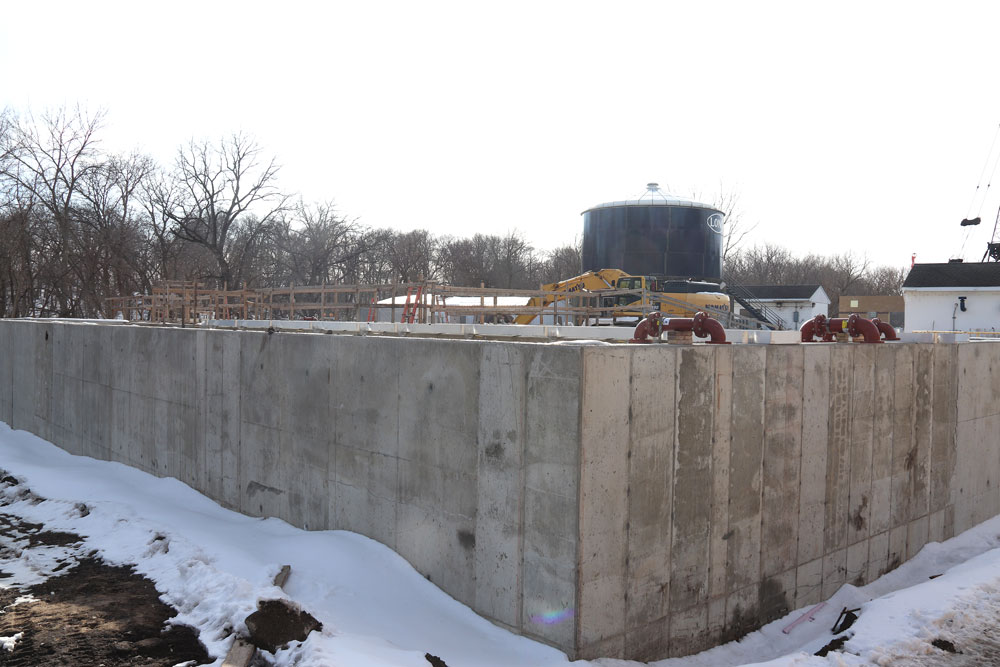
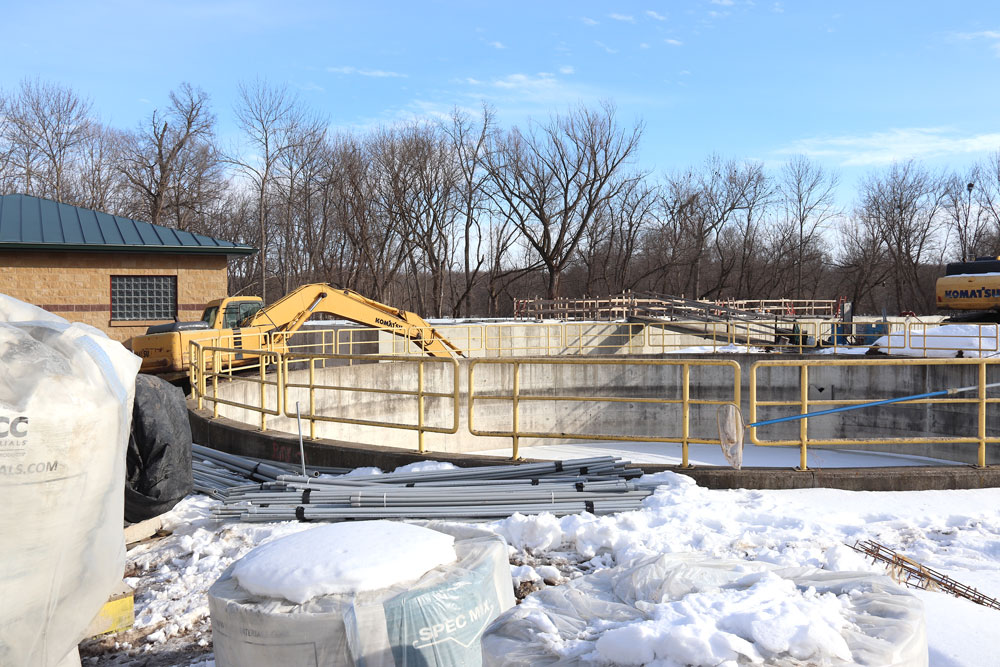
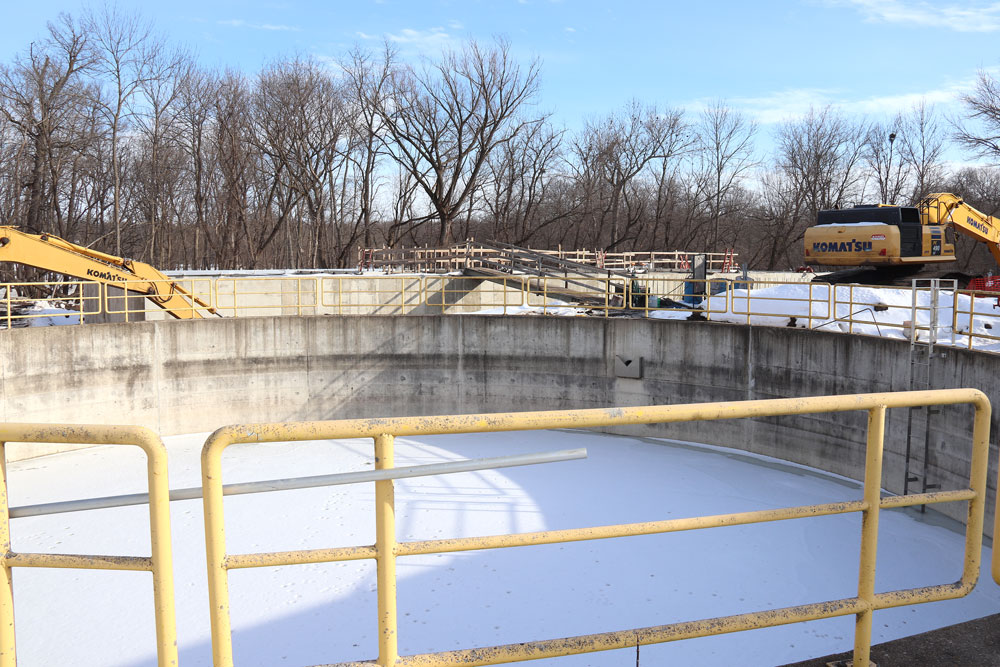
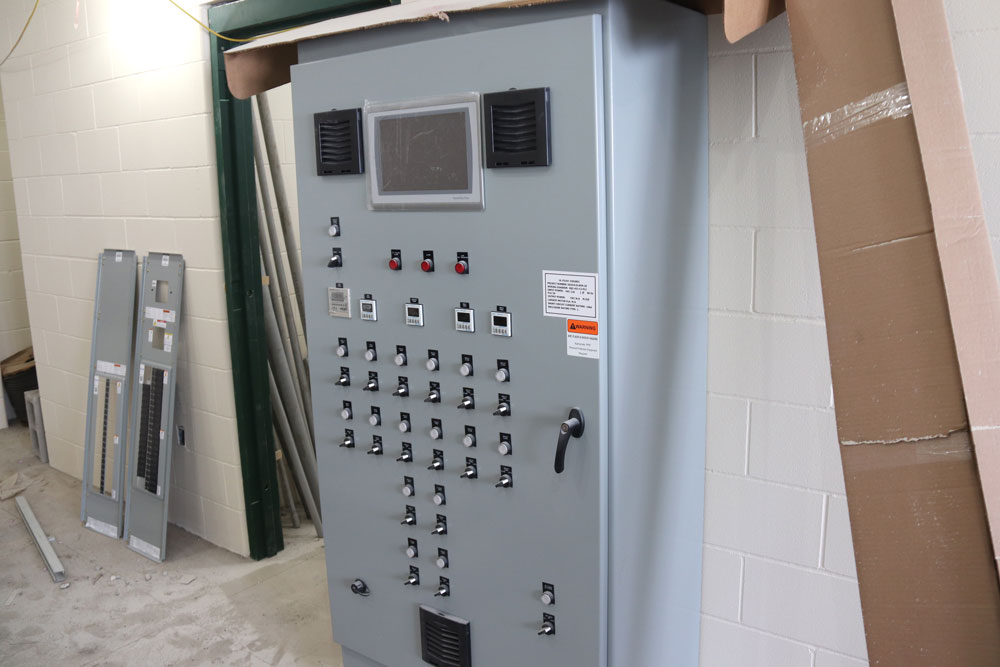
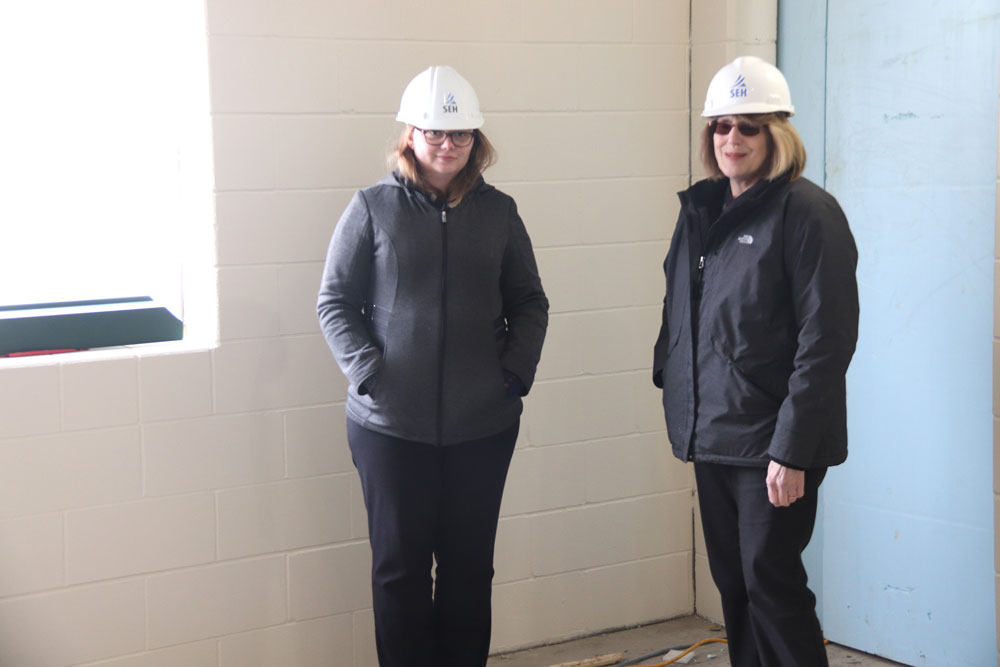
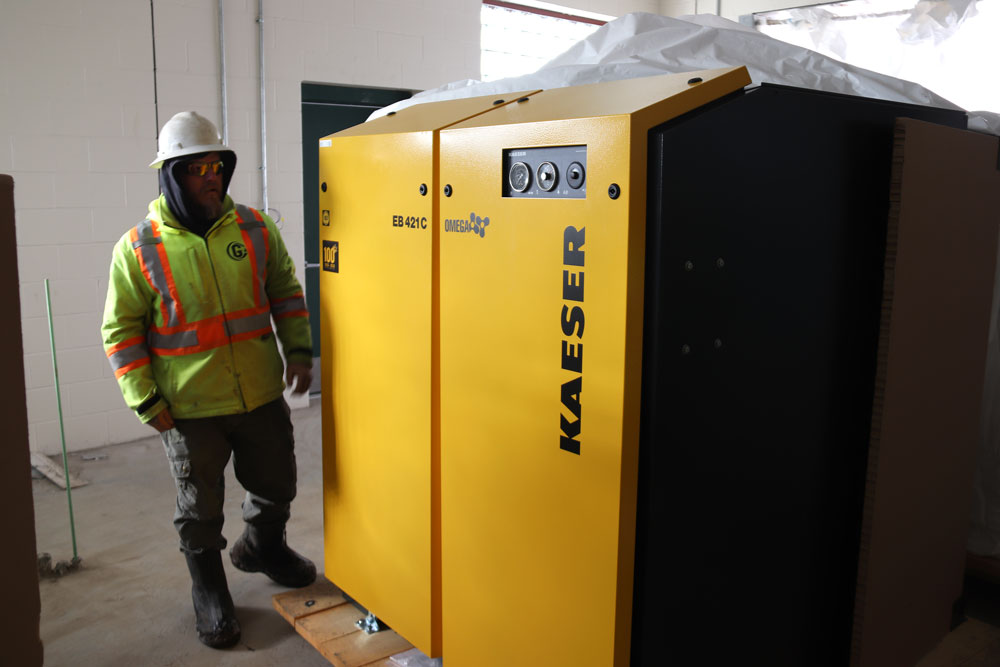

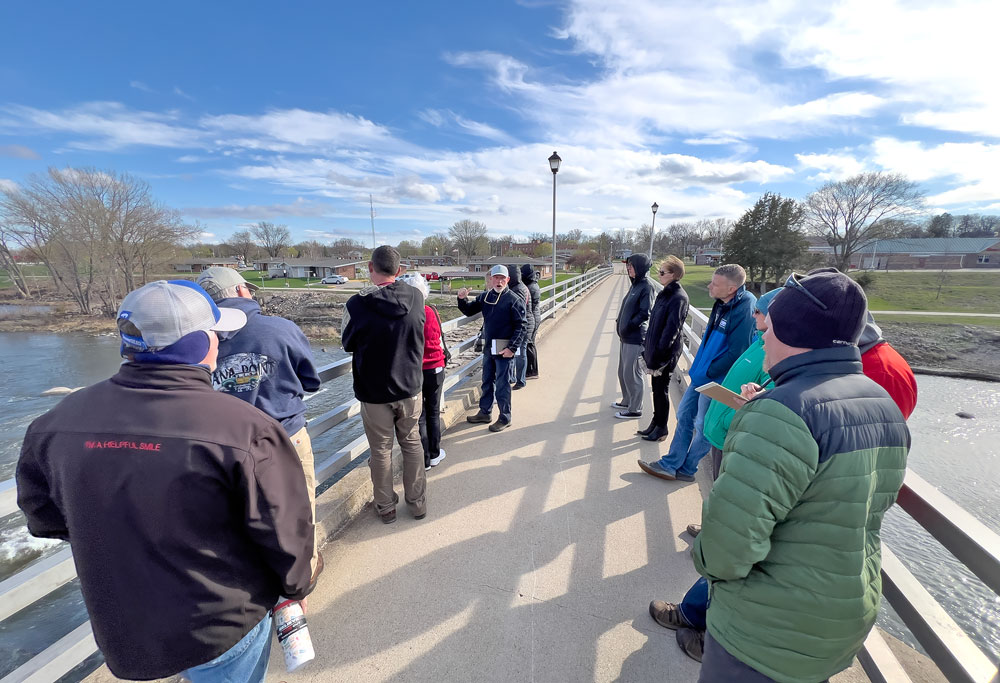

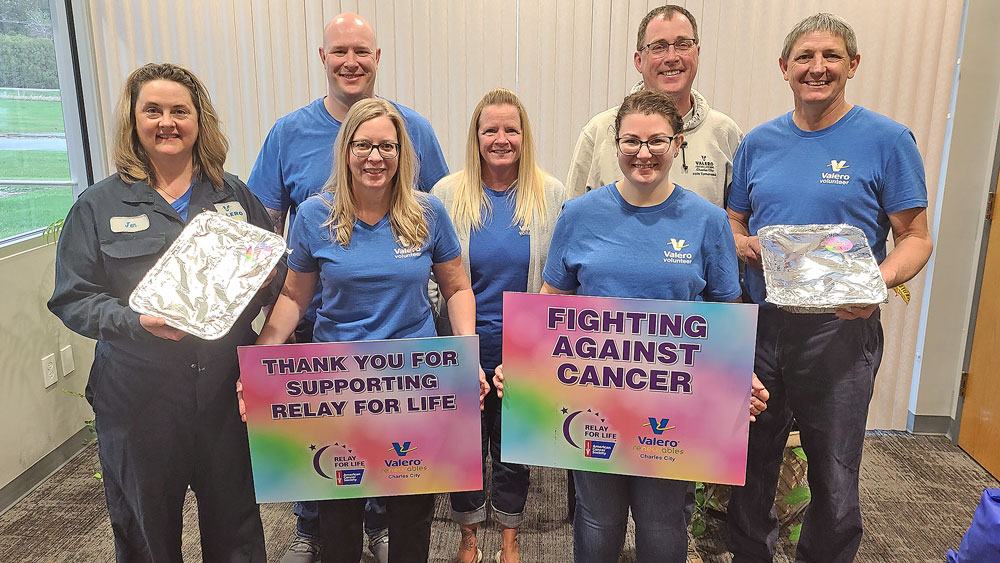


Social Share